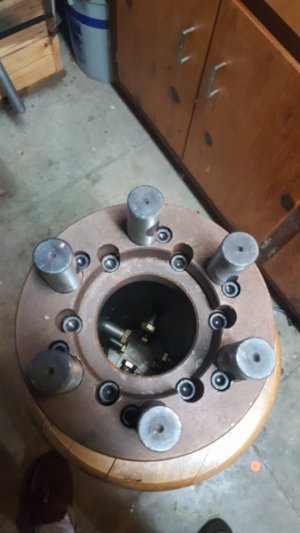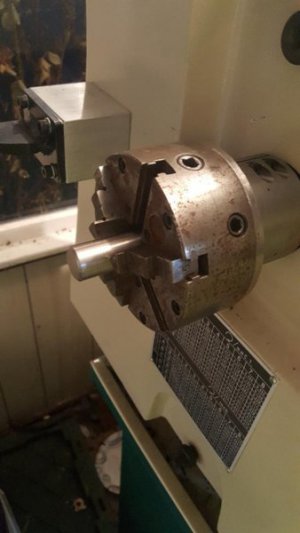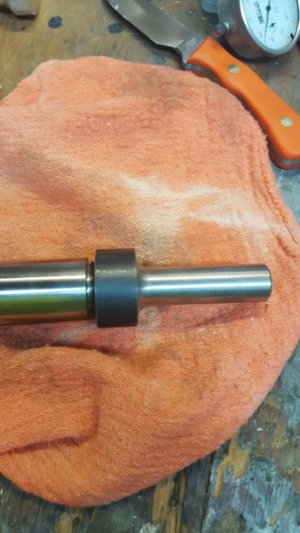Okay, neat idea.....But how is that outboard chuck mounted?
If by (right-handed) threads it seems to me it would really want to unscrew, especially during spin-up.....but I guess having it grip the same item that's in the in-board collet would help that.
Thanks,
-brino
Yes that is right, the inboard spider (or chuck) holds the work from turning so there is no torque on the outboard spider. The outboard spider is only for locating the barrel wrt the spindle axis and only enough pressure should be used on the screws to accomplish that. Any additional pressure added with the intent of 'holding' the barrel from turning can be counterproductive.




